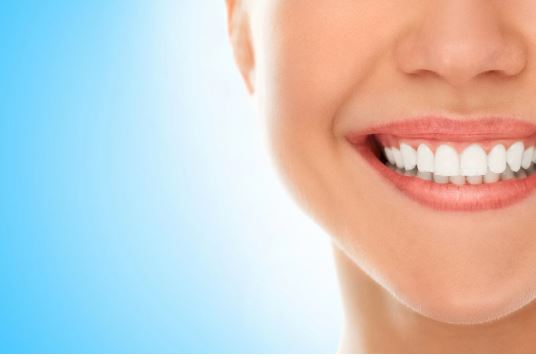How Tooth Alignment Works?
Tooth alignment refers to the proper positioning of teeth, ensuring they are straight and fit together correctly when biting. When teeth grow crooked or crowded, it is known as malocclusion or a bad bite. This can occur due to genetics, habits like thumb-sucking, or accidents.1,2 Misaligned teeth can make it hard to clean them, leading to cavities and gum disease. They can also cause trouble with chewing and speaking clearly.1 Orthodontic treatment fixes these problems. Dentists may suggest braces, which use metal brackets and wires to move teeth into place. Another effective option is aligners, which are removable trays designed to straighten teeth over time. Both methods help improve your smile and keep your teeth healthy.2
Who Needs Tooth Alignment Treatment?
Tooth alignment is crucial for addressing dental problems that can affect both health and appearance. If you have the following issues, you may require aligner treatment:
- Overbite: Upper teeth protrude too far over the lower teeth, causing discomfort and potential teasing.
- Underbite: Lower teeth push forward, making it difficult to chew and speak.
- Shifting Jaw: Teeth that don’t fit together properly can lead to significant jaw issues if left untreated.
- Crowded Teeth: Insufficient space in the mouth can necessitate tooth removal for proper alignment.
- Crossbite: Upper back teeth bite inside the lower back teeth, leading to discomfort.3
- Rotated Teeth: Teeth that are turned can interfere with how your teeth fit together and how you bite.
- Impaired Chewing Ability: If teeth do not fit together well, it can be hard to bite and chew food, leading to social embarrassment.5
These alignment issues affect your appearance and make chewing difficult for you, leading to social embarrassment and low self-esteem. Orthodontic treatment is essential for these issues to achieve a healthier, more confident smile. It not only straightens your teeth, but also improves how the teeth fit together, reduces problems like sleep apnoea, and prevents uneven wear of teeth. Braces or clear aligners can effectively treat these issues, ensuring healthier and properly aligned teeth.1
Braces vs. Clear Aligners for Teeth Alignment
When correcting misaligned teeth, traditional braces and clear aligners are two popular treatment options. Both effectively move teeth but have differences that make one more suitable than the other for certain individuals.
Traditional Braces consist of metal brackets which are fixed to the teeth, connected by wires and rubber bands. These components apply gentle pressure to gradually shift teeth into their proper places. As the wire is adjusted, it guides the teeth into alignment, enhancing your smile.6,7
In contrast, clear aligners are transparent, custom-made trays designed to straighten teeth. Each aligner fits correctly over your teeth and applies gentle pressure to it. You typically wear each aligner for one to two weeks before switching to the next. This process continues until your teeth are straight.8
Here is a comparison of traditional braces and clear aligners based on different aspects of care:
- Indications: Clear aligners effectively address mild to moderate crowding and spacing issues, along with some bite problems like deep overbites. Traditional braces are typically necessary for severe crowding and complex bites.
- Treatment Factors: Aligners can be removed for easy eating and brushing, requiring at least 20 hours of wear daily for optimal results. In contrast, traditional braces are fixed in place and require less effort but can be less convenient.
- Treatment Duration: Clear aligners usually offer a shorter treatment time of 3 to 6 months for mild cases, appealing for busy individuals, while braces often take longer.
- Clinical Efficiency: Aligners require fewer orthodontist visits, saving time compared to traditional braces, which need regular adjustments.
- Aesthetics: Aligners are transparent and hardly noticeable, making them popular among teens as well as adults.8,9
- Comfort: Aligners are more comfortable than braces because they cause less pain. Their smooth plastic design reduces irritation, while braces can hurt due to brackets and wires rubbing against the mouth.10
While both traditional braces and clear aligners are effective methods for straightening teeth, clear aligners provide a more comfortable and visually appealing option, making them a favourable choice for many individuals aiming to achieve an improved smile.
Your dentist can guide you best if aligner treatment is suitable for you based on your dental condition.
Clear Aligners in India
Clear aligners are becoming increasingly popular in India due to their effectiveness and discreet appearance. The aligners cost in India ranges from ₹80,000 – ₹1,20,000.11
One well-known brand is makeO Toothsi, which offers aligners starting at ₹50,000. Toothsi utilizes advanced German technology and high-quality materials to ensure effective treatment. They also provide convenient home visits for 3D scans and customized treatment plans, making the process easier for patients.12 Another option is 32 Watts, which provides personalised aligners and provides progress tracking throughout treatment.13
Overall, clear aligners are an excellent choice for anyone seeking a discreet and effective way to correct alignment issues.
Conclusion
Both braces and clear aligners are effective methods for correcting various tooth alignment issues. Clear aligners can effectively treat mild to moderate crowding, spacing issues, and some bite problems. They are almost invisible, and their removable design makes it easier to maintain oral hygiene, which can be appealing for many patients. Ultimately, the choice between braces and aligners depends on individual needs and preferences. It’s essential to consult an orthodontist to determine the best treatment option tailored to your specific dental requirements.
References
- American Dental Association. Braces: Straighter teeth can improve oral health. J Am Dent Assoc. 2007;138(4):556. Available from: https://jada.ada.org/article/S0002-8177(14)62340-0/fulltext#:~:text=It%20is%20used%20to%20correct%20a%20malocclusion%20%28bad,the%20premature%20loss%20of%20teeth%20or%20an%20accident.
- 35.Teeth straightening and braces – Australian Dental Association [Internet]. Teeth.org.au. Available from: https://www.teeth.org.au/teeth-straightening-and-braces
- Hamidaddin MA. Optimal Treatment Timing in Orthodontics: A Scoping Review. Eur J Dent. 2024 Feb;18(1):86-96. doi: 10.1055/s-0043-1768974. Epub 2023 Jun 13. Available from: https://www.ncbi.nlm.nih.gov/pmc/articles/PMC10959601/
- Cleveland Clinic. What Is Orthodontics? [Internet]. Cleveland Clinic. 2022. Available from: https://my.clevelandclinic.org/health/treatments/24285-orthodontics
- Jawad Z, Bates C, Hodge T. Who needs orthodontic treatment? Who gets it? And who wants it? British Dental Journal. 2015 Feb;218(3):99–103. Available from: Who needs orthodontic treatment? Who gets it? And who wants it? | British Dental Journal (nature.com)
- Harrison J. Orthodontic treatment. Vital. 2011;8:10.1038/vital1329. Available from: https://www.researchgate.net/publication/50358847_Orthodontic_treatment
- Cleveland Clinic. Dental Braces: Types, Uses, Care [Internet]. Cleveland Clinic. 2023. Available from: https://my.clevelandclinic.org/health/treatments/24601-teeth-braces
- AbdulMajeed AlMogbel. Clear Aligner Therapy: Up to date review article. Journal of orthodontic science. 2023 Jan 1;12(1):37–7. Available from: https://journals.lww.com/joos/fulltext/2023/09040/clear_aligner_therapy__up_to_date_review_article.37.aspx
- Alangary M, Radwan A, Alshehri M, Alzahrani A, Himdi A, Alturkestani M, Alsaedi M, Alghamdi M, Hassanein Z. Indications, limitations, and outcomes of clear aligners in orthodontic treatment. Int J Community Med Public Health. 2023 Jun 20;10. doi: 10.18203/2394-6040.ijcmph20231793. Available from: https://www.researchgate.net/publication/371733182_Indications_limitations_and_outcomes_of_clear_aligners_in_orthodontic_treatment
- Hashemi S, Hashemi SS, Tafti KT, Khademi SS, Ariana N, Ghasemi S, Dashti M, Ghanati H, Mansourian M. Clear aligner therapy versus conventional brackets: Oral impacts over time. Dent Res J (Isfahan). 2024;21(1):6. doi:10.4103/drj.drj_437_23. Available from: https://journals.lww.com/derj/fulltext/2024/01250/clear_aligner_therapy_versus_conventional.6.aspx
- Toothsi Aligners Cost in India – Types of Braces & Price Factors [Internet]. makeO. makeO; 2023. Available from: https://makeo.app/blog/oral-care/how-much-do-aligners-cost-in-India
- Toothsi Aligners Price – Invisible Teeth Braces Cost in India [Internet]. makeO. 2016 [cited 2024 Sep 24]. Available from: https://makeo.app/toothsi/pricing
- 32 watts [Internet]. 32 Watts Clear Aligners. 2023 [cited 2024 Aug 13]. Available from: https://www.32watts.com/index.html





